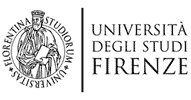Superstructures and multi-components architectures in Life and Material Sciences
Lucia Banci, Matteo Mannini
6 ECTS: 32 hours of lectures and 24 hours of laboratory practice
Aims: The course aims at providing to the student the necessary abilities to harness the functional properties resulting from the organization in complex architectures . The student will gain a multidisciplinary experience by applying the concepts of hierarchical organization and multifunctional design in the investigation of biomolecules and hybrid molecular-inorganic architectures.
Lectures: Non-covalent interactions in life sciences: Description of the nature of non-covalent and weak interactions in biomolecules, such as proteins and nucleic acids. Forces that determine their folding and their tridimensional structure. Molecular recognition and transient interactions. Factors determining partner selectivity. Kinetic and thermodynamics aspects. Metal-dependent protein-protein interactions and transfer. Assembly of large molecular machines and their interaction with substrates and their mode of action. Methods for their study (NMR, EPR, cryo EM, biophysical techniques).
Hybrid architectures in material sciences: Definition of the components of a complex architecture. Classes of solid substrates (insulating, semiconducting, metallic, magnetic, etc.). Growth modes, epitaxy and surface reconstruction. Deposition of functional molecules through physical and chemical methods: vapor deposition, electron-spray deposition, self-assembly from solution and other wet chemistry approaches. Surface mediated coordination chemistry and reactivity. Structural, chemical, and electronic characterization of surfaces and hybrid architectures through STM, LEED, XPS-UPS, SIMS, XAS, local and averaged conductivity measurements.
Laboratory practice:
- Life sciences (12 h): Characterization of some protein-protein interaction and of a metal transfer process as followed by heteronuclear NMR titrations. Determination of structural models of protein complexes, through experimental data and structural modeling.
- Material sciences (12 h): Preparation of surfaces via PVD and sputtering techniques. Self-assembly of a molecular monolayer. Morphological characterization through STM. XPS characterization. Analysis of morphological and spectroscopic data.


